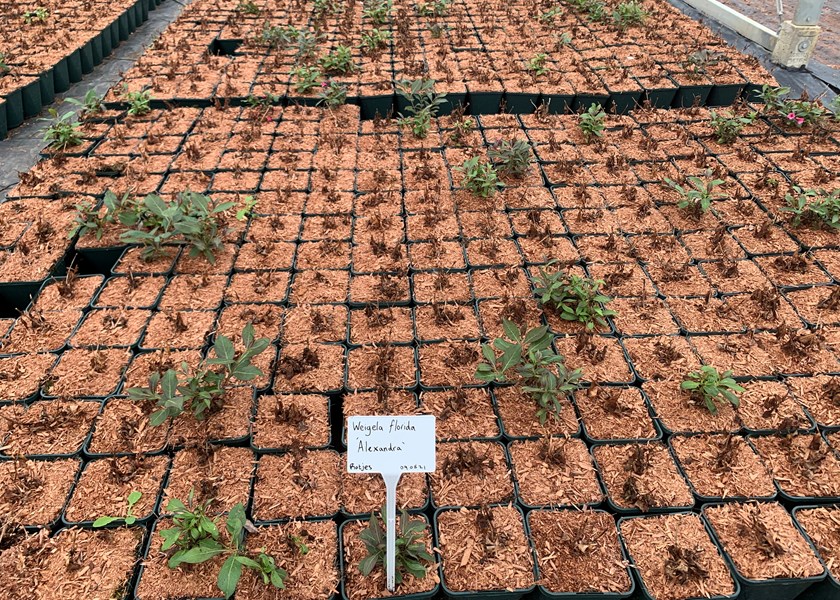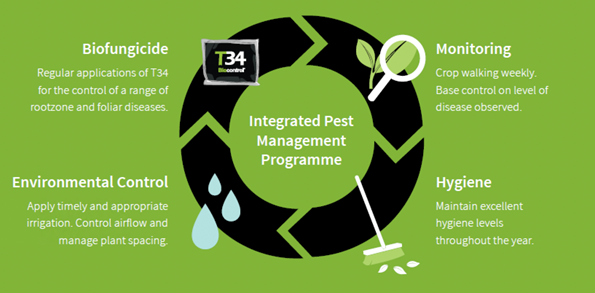Root zone disease control
Root systems play a crucial role in plant health, absorbing water and nutrients and starting the transportation of key elements around the plant.

Root systems play a crucial role in plant health, absorbing water and nutrients and starting the transportation of key elements around the plant.
The root zone can be very vulnerable to disease. It has a warm, damp and nutrient rich environment, which makes it particularly conducive to pathogen growth. Root diseases impact the plant’s ability to uptake and translocate water, nutrients, and important biological compounds, resulting in severe consequences for plant health.
A disease of the roots has the knock-on consequence of impeding the uptake of water and nutrients, leading to a variety of plant health issues.
As with any crop health issue, prevention is key and should be the first aspect a grower considers. This includes ensuring excellent hygiene measures, irrigation water and equipment is clean, growing media is stored in a hygienic manner, and pots, trays and growing areas have been properly sterilised. All these practices will help set a firm foundation of an IPM programme.
As most root zone diseases favour anaerobic conditions, saturated growing media presents a significant risk. This will stress the plant and favours the development of a range of diseases. Ensuring the root zone does not sit wet for an extended period is very important, and proper irrigation management is key.

Young roots are often most vulnerable, a well-established root system will better serve the plant and be more resilient to infection. Growers should consider factors such as air-filled porosity (AFP) of the growing medium, as this can improve early rooting.
Root hormone products such as the Rhizopon range*, can help in the early stages of propagation to initiate a strong root system. Fargro has a range of rooting powders all designed to suit the needs of specific types of crops.

Even with properly implemented cultural and hygiene controls, the risk of root zone diseases remains high. As such we advise growers, where approvals allow, to use T34 Biocontrol. (find out more about T34 in the drop down below).

An IPM programme will limit the risk of a disease developing, however, it will not eliminate the possibility, so it is important to know what other options are available in high-pressure crops or environments and how these products can be worked into your IPM programme.
T34 (17290) Biocontrol (Trichoderma asperrellum, strain T34). T34 is a biopesticide that will colonise the root zone to out-compete pathogens, hyperparasite diseases, synthesise biostatic compounds and elicit plant disease defence mechanisms.
Being based on a naturally occurring fungus, T34 fits in well with an IPM programme and has an excellent environmental safety profile, making it a very easy product to work with. T34 has several application methods and has been applied across a range of crops, both on-label and via EAMU.
Proplant (15422) is a semi-systemic fungicide based on propamocarb hydrochloride with protective action against Pythium spp, Phytophthora spp, and Peronospora parasitica. Proplant is used on ornamental crops under the EAMU 20160785, many growers have found Proplant effectively protected germinating seeds, seedlings, pot or container plants and transplants from infections.
Root rot diseases present a significant risk to ornamental plant production. Root disease impedes the uptake of water and nutrients which can mean crops won’t meet the specification set out by the customer or the crop may fail. Having good cultural and hygiene controls in place sets the foundation of your IPM programme.
Optimising early root formations through proper AFP, the use of rooting hormones and preventative treatments such as T34, play a key role as an insurance measure to protect young plants. Growers should also be aware that products with curative properties such as Subdue are available and have a place in an effective IPM programme.
Use plant protection products safely. Always read the label and product information before use. Further detail on warning symbols and phrases is included on the labels and leaflets (SDS).
For more information on how to create an effective IPM programme for your crop please email technical@fargro.co.uk or call the team on 01903 256856.